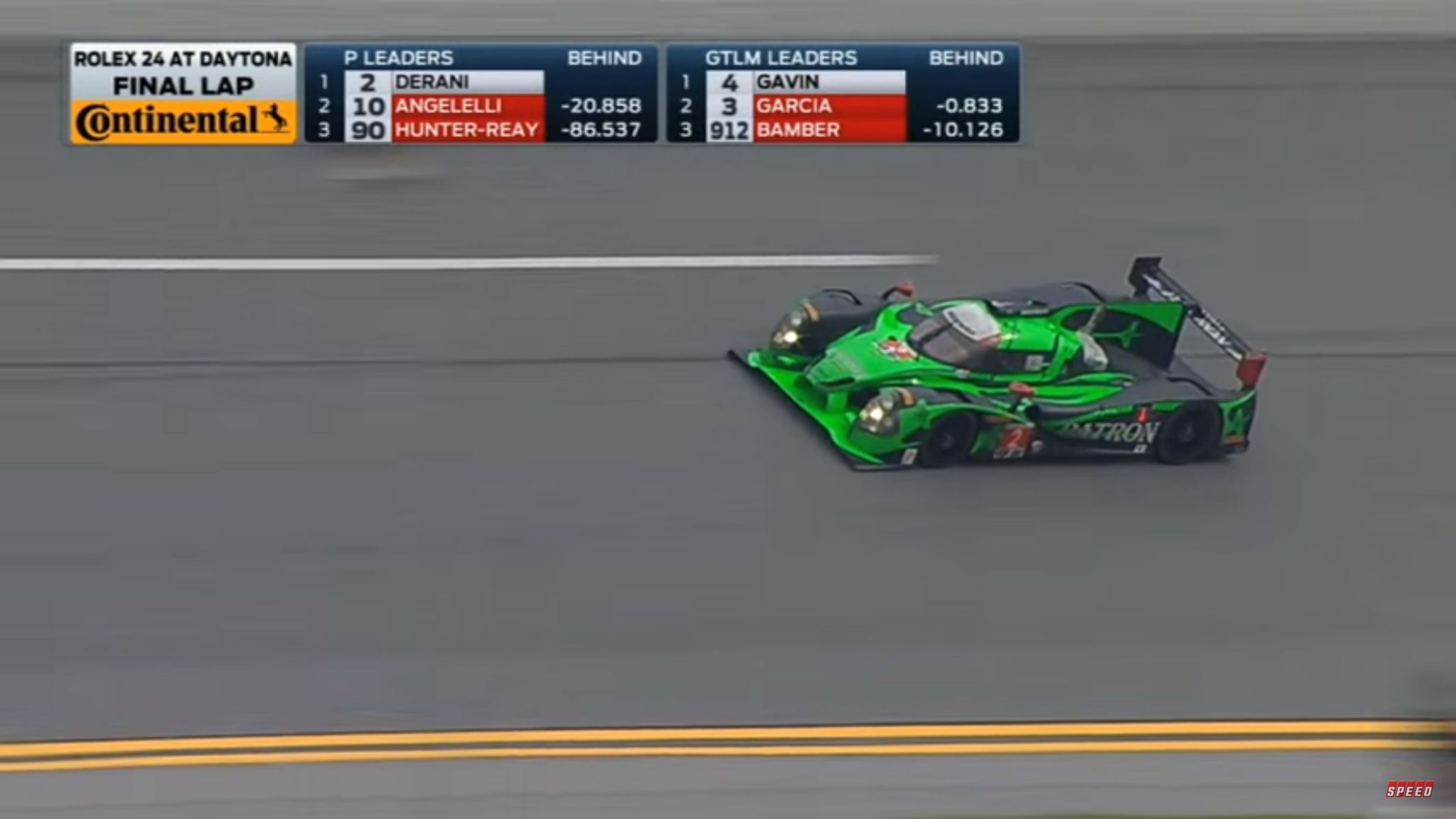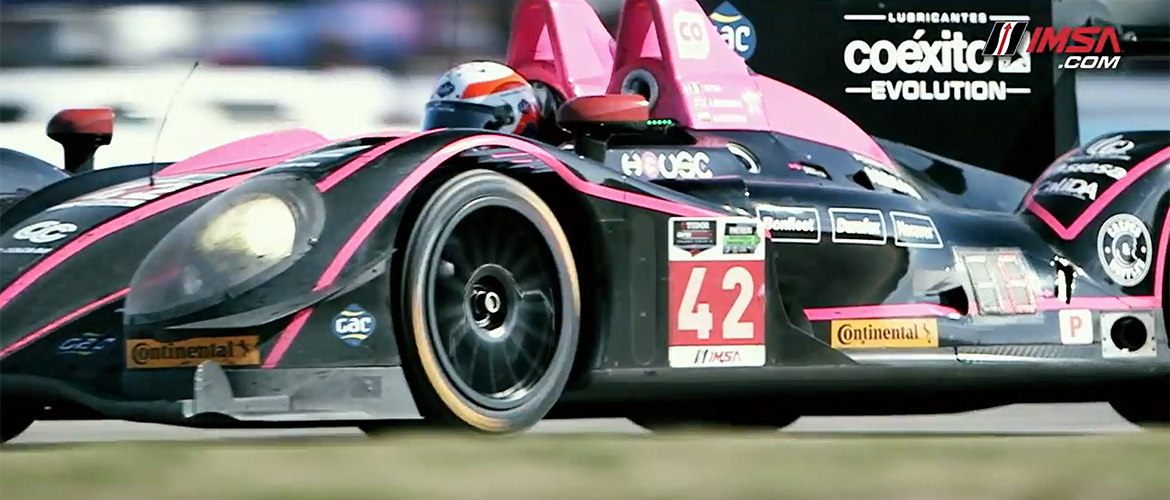I had the pleasure of first seeing Mike Hedlund race at the 25 hours of Thunderhill in December, 2012. His team was fielding a GT3 cup car and was doing really well, and even led for quite some time, until mechanical gremlins forced him to retire just an hour before the finish. Mike saw one of the photos I shot of their car and got in touch with me to express appreciation for the photo. Since then we’ve become friends on Facebook and I’ve been following his career closely.
You may recognize Mike’s regular rides, the #11 JDX Hertz Porsche in the ALMS GTC class and the #03 Tequila Patron Ferrari in Rolex GT. Two VERY distinctive cars, to say the least: the chrome gold Porsche, and the lime green and black Ferrari. Great cars, and great teams, indeed.

I have always appreciated Mike’s point of view regarding GT racing, which he talks about regularly on Facebook; but today he posted a very detailed and exceedingly well-written blog post about his views on the future of GT racing, with the merger of ALMS and Rolex coming in 2014. It was such a good read, I asked Mike if I could share it with all of you My Life at Speeders, and he gave his permission to repost it in full. If you’re anything like me, you’ll enjoy the read particularly since it comes from a guy whose livelihood is earned behind the wheel of a race car. This is a true insiders view of where GT racing is going and his well-educated opinions on the matter.
Enjoy! – Ken Stouffer
The following text is posted with permission of Mike Hedlund
With the merger announcement made last year between the American Le Mans Series and Grand-Am there’s been a lot of talk about the P2 and DP classes merging, and rightfully so. They’ll be the top class fighting for overall wins and for the series to be successful they’ll need to be sorted out.
However, there’s been almost no talk of the GT classes from either journalists or USCR. I’m going to lay out my thoughts on the GT classes here as part experiment (to see how close I was once the series starts) and part knowledge transfer to share what I’ve learned from talking to team owners, drivers and people in the paddock at the races. Hopefully, this will be short and sweet. Part 1 is what I predict from USCR for 2014 based on what I know, and Part 2 is what I would do if I were king.
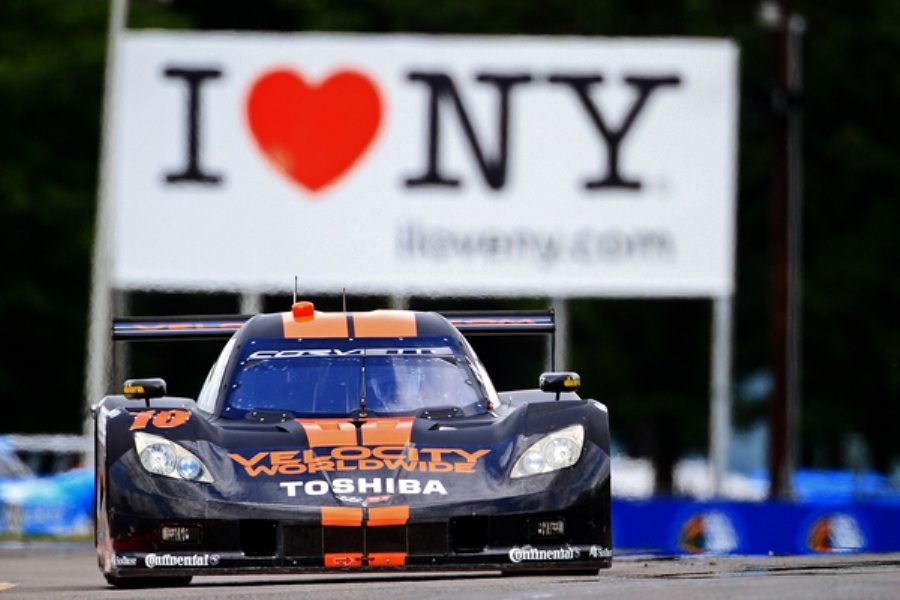
Part 1, What I Predict:
The current ALMS GT class, which will become the USCR GTLM (LM for Le Mans) class in 2014 and will remain completely as is. Down to the ACO regulations for each car w/ any additional BOP done by ALMS in the past (i.e.; Corvette ballast, etc). It will continue to be open tire, as all the teams have tire contracts that are not easily voided. This one is easy enough and USCR has basically said from the beginning that this class will remain as is.
The current ALMS GTC and Grand-Am Rolex GT classes will be combined into the new USCR GTD (D for Daytona) class for 2014. Here’s where it gets a little tricky…
Currently ALMS GTC is defined as a Pro-Am class. This means there must be at least one “amateur” in the car for each race. (I put amateur in quotes because I personally feel the way amateurs are defined in the sport is an insult to anyone with an IQ over 31…but we’ll save that for another time) In order to score championship points in the race, the “Am” must drive a minimum amount of time. The time requirement differs based on the length of the race, but typically falls into what would be an “equal” stint with his or her co-drivers. For example, at a normal “short” race duration of 2 hours and 45 minutes, the minimum drive time for the “Am” is 60 minutes. The GTC cars typically go 70-75 minutes on a full tank of fuel, so the driver change strategy is basically the same as if you had 2 Pro’s in the car. At the 12 Hours of Sebring the minimum drive time was 3 Hours, which is basically a minimum of 3 stints in the car to earn points.
Being a Pro-Am class, these drive time rules make complete sense and put a high emphasis on the “Am” in the car having to do a very good job, in order for the car to be competitive at the end of the race. The cars with the stronger Am’s tend to do better than those with the weaker Am’s.
In Rolex GT there is no “Pro-Am”. There are cars which have “Am” drivers and cars which have all-Pro lineups competing against each other at the same time. For the longest time I struggled with understanding how the Pro-Am lineups were competing with the full Pro cars (and competing they were, just look at my good friends at Magnus Racing! they’ve been kicking ass!). It wasn’t until I participated in a couple non-24 hour races that I started to understand.
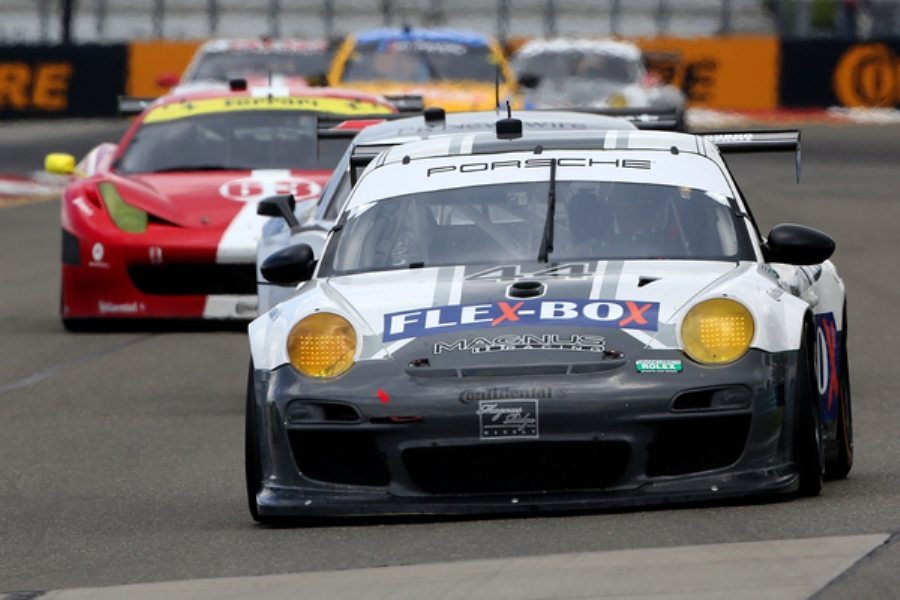
The minimum drive time is “around” 30 minutes for the driver to score points in a Grand-Am Rolex race. It doesn’t matter if it’s a short 2 hour race or the 24 Hours of Daytona. In the first 30 minutes of the race, all the “Am” does is try to stay on the class leaders’ lead lap. If they can do that, they then hand over the car to the Pro and he battles his way through the field (which is typically bunched together by numerous caution periods). That’s all there is to it. Not very exciting from the “Am” point of view, but it seems to generally work to keep the racing close at the end and “Am” supported entries on the grid.
Now, if the USCR GTD class is categorized as a “Pro-Am” class next year, I’d guess USCR will go with the ALMS philosophy on driver time requirements.
Since we covered the driver requirements, let’s move onto the cars! For those who aren’t super familiar with the GTC class and the Rolex GT class, here’s a quick primer:
ALMS GTC cars are nearly identical to the cars as delivered by Porsche Motorsport. You literally call up Porsche, say “I want a GT3 Cup” and after wiring them around $220,000, it’s on a boat or plane headed your way. Your team gets the car, puts about $20,000-40,000 worth of brake rotors and fancy dampers (shocks for us Yankees) on the car and you’re ready to go racing in the GTC class0 (There are a few other small things like brake ducts and quick fill oil ports, but really…that’s it as far as time and money are concerned) Once you show up at the track, a friendly Porsche Motorsport engineer (Hey Andrew!) comes by and gives the team a small restrictor to be placed in the intake manifold (more on that later) and re-flashes your ECU. Voila…time to go racing!
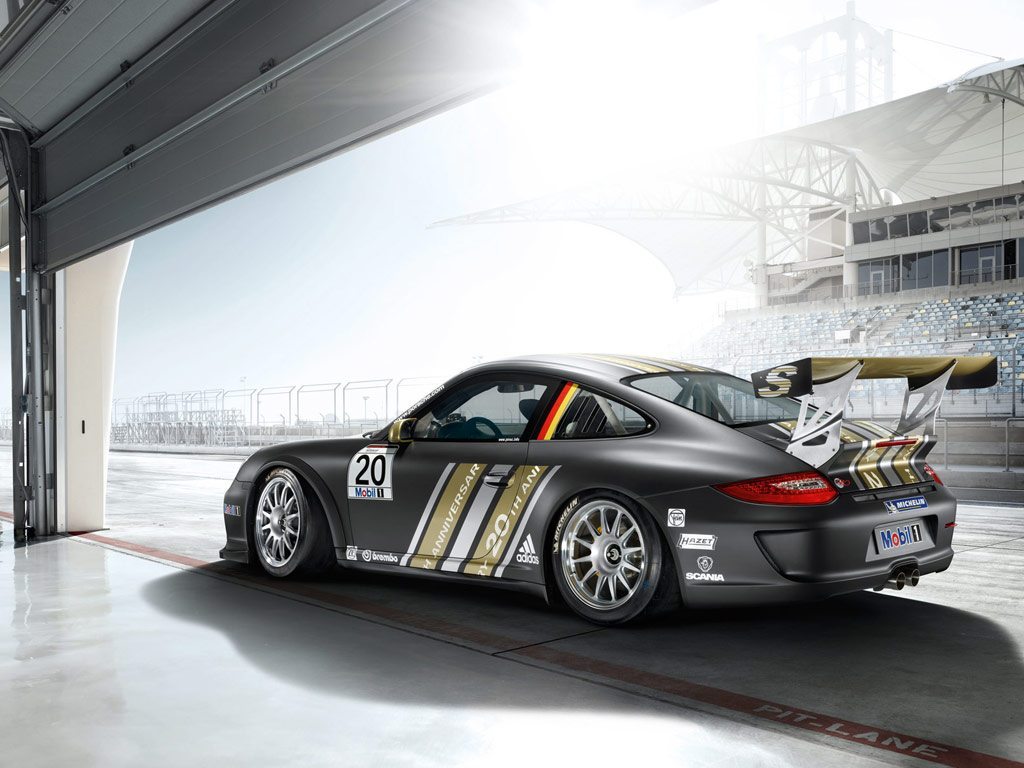
Conversely, if you want to race a Porsche Cup in Rolex GT, the procedure is as follows:
Wire $220,000 to Porsche and wait for the car to arrive. Wire $175,000 to Porsche Motorsport North America for a new 4.0L Rolex spec Cup engine and RSR gearbox. Have your guys at the shop spend a few weeks (hopefully they aren’t billing you for this labor…it’s your team right?) modifying the chassis to accept the RSR gear box. While the team is working on the chassis, you have to spend another few days tubbing the rear wheel wells to fit the giant Continental tires. Place your order for about $20,000 worth of dampers (not including spares). Place an order for a complete Tilton brake master cylinder setup (about another $25k). Bolt on a small spec rear wing, pull the windows out of the expensive carbon fiber doors, install window and driver safety nets, adjustable ECU map switches, and cockpit adjustable sway bars front & rear (which isn’t easy, have fun fab’in up your own parts). Congratulations!! You’re the proud new owner of a $450,000 race car that isn’t legal in any other series in North America! But it’ll be damn fast at Daytona and a championship contender.
Or you could go buy a new Grand-Am spec Ferrari 458 or Audi R8 for around $350,000 which isn’t legal anywhere else either. But hey, you’ll save $100,000 which *might* just cover the cost of your co-driver for the season.
After spending all that money on the Grand-Am spec car, you’ll be lucky to run about 1 second faster at most of the tracks where both GTC and Rolex GT run. Most of it comes down to tires and horsepower. The GTC Yokohamas are better than the Continental GT tires (and WAAAAAAAYYY better than the Continental “speedway” GT tires…worst tires on the planet don’t even get me started…). However, the Grand-Am cars have a LOT more power and generally less drag (due to less downforce).
Now how do we go about balancing these cars to run together? That’s the beauty of 2014. I don’t think it’ll be much of a problem — the bulk of the GTC teams will go away.
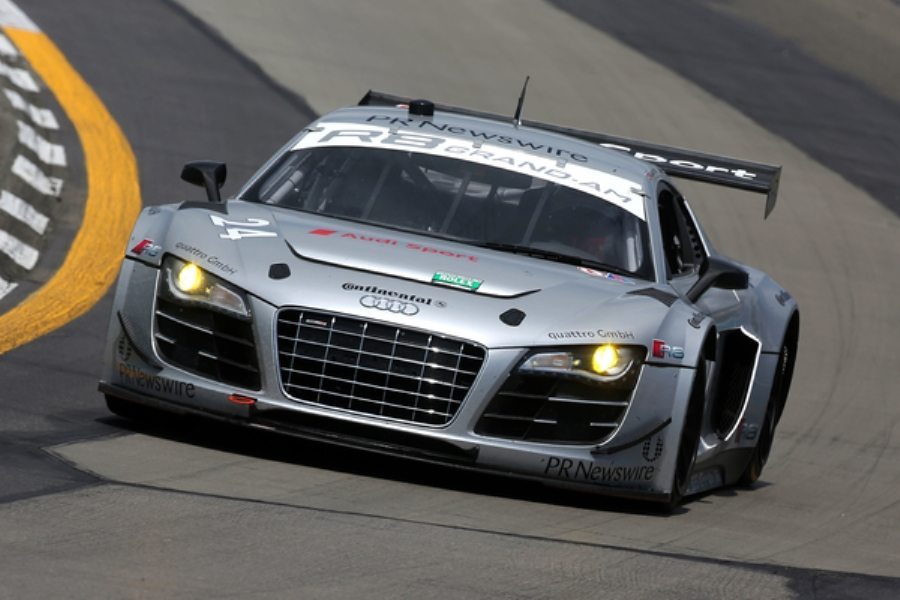
2014 will be the first year that the new 991-based Porsche GT3 Cup is available in North America. From talking with people in the paddock, everyone believes this car will be the new “baseline” for the USCR GTD class. It’s faster right off the boat than the current 997 based Cup that’s run in ALMS GTC, which is great because it gets the baseline closer to the current Grand-Am Rolex GT spec. And since the new car will be available and it costs so much to upgrade the old car to the “current” Rolex GT spec, I doubt any single ALMS GTC team will enter current hardware into USCR GTD next year. Voila! Problem solved…(at the expense of some teams…but hey, this isn’t UNICEF!)
One slight hiccup, the new 991 Cup appears to go about it with the same motor as the old car…which means it must have more mechanical grip and more downforce. Exactly the opposite philosophy that Grand-Am has used in Rolex GT historically.
How are they going to balance the current crop of Rolex GT cars with the new 991 Cup for 2014? My guess is big restrictors across the board to bring them down to the straight line performance level of the new 991 Cup; which will be slightly slower than the old Cup (and probably right about the speed of the restricted GTC cars) due to the same power and more drag (downforce). However, once you take the motor away from the current Rolex GT cars they’ll be complete dogs! They already have very little downforce and questionable tires. Mechanical grip isn’t so bad as the chassis have a lot of development into them, but the tires aren’t as good as the chassis. How many people are lining up to drop $350,000 (or $450,000 in the case of the new Viper!) on a new USCR GTD car to go SLOWER than the year before and not even have a market to get rid of it after you’re done?
By the way, the current Rolex GT cars are faster down the straights than ALMS GT cars. Can you say chrome horn in the corners? They already restrict the GTC cars to make it easier for the ALMS GT cars to overtake on the straights. Could you imagine GTC cars with another 75+ HP? As awesome as that’d be for those of us who drive in GTC now, ALMS GT drivers would all have grey hair by Petit and I’d be going through a lot of rear bumpers.
My predictions for 2014 USCR GTD:
* ALMS-style minimum drive times for the “Am” in the car.
* 991 Porsche GT3 Cup as-delivered, new baseline for the class.
* All current Rolex GT cars get a restrictor to get power inline with 991 Cup.
* New (larger) spec rear-wing allowed to increase downforce to match 991 Cup.
* Increased maximum front splitter length (from 2″ to 3″).
* Spec tire changed to Continental “Speedway” I-spec tire for ALL tracks to slow the cars down another 1-2 seconds per lap.
* Tube frame cars not allowed (with Stevenson not running GTD next year it only leaves Turner. With BMW pulling support from Turner, I expect them to switch to a GT3 chassis next year…if they stay in GTD)
Part 2: Now that that’s out of the way, let me tell you what I’d do if I were King for 2014.
* ALMS-type minimum drive times for the “Am” in the car.
* Full FIA-GT3 spec permitted. BES ballast and restrictor sizes used as the baseline for each car. USCR does local changes when needed to balance performance.
* Spec tire: current Continental “Sprint”, optional “Speedway” tire if cars are too fast.
* Previous generation Rolex GT permitted w/ full Pro driver lineups. ABS and Traction control permitted. Leave the window open for possible wing and splitter enhancements to improve performance if needed.

My reasoning is very simple: let us race cars which are readily available, that have performance envelopes that make them not only fun and challenging to drive, but also provide great entertainment for the fans. A by-product of this is that it also allows teams and drivers to easily come over from Europe to race in certain (or even all!) events; as well as provides a market to move and switch between cars during the off season. This also provides a lower barrier to entry, by used GT3 cars being plentiful around the world.
My inclusion of the previous generation cars also allows current teams to keep running w/ relatively low cost for upgrades. (It costs about 5 sets of tires to put a motorsport ABS system onto a race car, I’ve done it) This also allows the current fully Pro teams to keep running, instead of putting the drivers out of work or the teams out of business. The cost to move up to a DP from a Rolex GT car are about 2-3x seasonal budget. Trust me, I’ve looked into it… 🙂
The biggest risk for this plan is speed differential between USCR GTLM and GTD. As they’re unloaded from the factories, the FIA-GT3 cars are very similar in outright pace to the GTE/GTLM cars. This is due to the fact the GT3 cars have slightly more open rules in regards to aero as well as utilizing ABS and traction control. They’re also a fraction of the cost to buy and operate as the GTE/GTLM cars. However, I think a spec tire and possibly slightly larger restrictors, would allow the series to easily maintain the appropriate performance differential between the 2 classes. Just by using the current Continental “Sprint” compound tire the full FIA-GT3 car is going to lose 2+ seconds per lap versus the “Confidential” factory tires used by the GTLM cars.
Another major issue with my plan is Porsche. I love them. They’ve created a very successful business around supporting customer racing in North America. I wouldn’t have been able to get to where I am in racing (which isn’t very far…don’t get me wrong!) without Porsche Motorsport. But let’s be honest, they don’t have a full FIA-GT3 spec car. I suppose you could build one that’s competitive on your own, just like the current Rolex GT Porsche… but it’ll probably reduce the class from being half Porsche to just a handful of Porsche entries.
The other thing you’ll hear people say is “but the FIA-GT3 costs are starting to get out of hand, how much longer will that class of car be successful?”. I don’t have the answer to that, but there are simply so many race cars available now, it’s a SHAME not to take advantage of it while we can! Maybe in 3 or 4 years we’ll have to revisit the class, but we do that every few years anyway!
Not doing something now because you’re afraid of what the future holds is a recipe for mediocrity.
I have a lot of respect for Scott Atherton and Scot Elkins, but I feel they’re missing the boat on this one; either due to management by committee behind the scenes or lack of confidence on their own. I’m sure the series will be OK either way, but I want it to be F***ING AWESOME!
These issues should have been discussed and debated out in the open months ago. The fact is no matter what they announce, some people are going to be upset and changes are going to HAVE to be made. The earlier everyone knows what the plan is for next year the earlier these discussions and changes can take place.
-mike
There you go kids. Pretty cool insight, isn’t it? If you don’t already know Mike Hedlund, you should take some time to get to know him. Fantastic driver and ambassador for GT racing.


